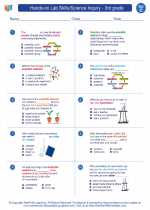Indian Ocean
The Indian Ocean is the third largest of the world's oceanic divisions, covering approximately 20% of the water on the Earth's surface. It is bounded by Asia to the north, Africa to the west, Australia to the east, and the Southern Ocean to the south. The Indian Ocean is known for its rich marine biodiversity, trade routes, and cultural significance.
Key Facts about the Indian Ocean:
- Location: It is located between Africa, Asia, Australia, and the Southern Ocean.
- Size: The Indian Ocean covers an area of approximately 70.56 million square kilometers.
- Marine Biodiversity: The Indian Ocean is home to diverse marine life, including coral reefs, fish, marine mammals, and sea turtles.
- Trade Routes: The Indian Ocean has historically been an important trade route, connecting the economies of the Middle East, Africa, and Asia.
- Climate Influence: The Indian Ocean has a significant impact on the climate of the surrounding regions, influencing monsoons and weather patterns.
Study Guide for the Indian Ocean:
To understand the Indian Ocean better, consider the following topics for study:
- Geography: Explore the geographic features of the Indian Ocean, including its major ports, islands, and surrounding landmasses.
- Marine Life: Research the diverse marine species that inhabit the Indian Ocean and the importance of conservation efforts in the region.
- Trade and Commerce: Learn about the historical and contemporary trade routes that traverse the Indian Ocean and the economic significance of these maritime pathways.
- Climate and Weather: Investigate the influence of the Indian Ocean on regional climates, particularly its role in monsoons and weather patterns.
- Cultural Connections: Examine the cultural exchanges and historical interactions facilitated by the Indian Ocean, including the spread of religions, languages, and traditions.
Studying the Indian Ocean provides valuable insights into the interconnectedness of marine ecosystems, human societies, and global trade networks.
.◂Science Worksheets and Study Guides Third Grade. Hands-on Lab Skills/Science Inquiry - 3rd grade
Study Guide Hands-on Lab Skills/Science Inquiry - 3rd grade
Hands-on Lab Skills/Science Inquiry - 3rd grade  Worksheet/Answer key
Worksheet/Answer key Hands-on Lab Skills/Science Inquiry - 3rd grade
Hands-on Lab Skills/Science Inquiry - 3rd grade  Worksheet/Answer key
Worksheet/Answer key Hands-on Lab Skills/Science Inquiry - 3rd grade
Hands-on Lab Skills/Science Inquiry - 3rd grade  Worksheet/Answer key
Worksheet/Answer key Hands-on Lab Skills/Science Inquiry - 3rd grade
Hands-on Lab Skills/Science Inquiry - 3rd grade  Worksheet/Answer key
Worksheet/Answer key O-W-L
O-W-L  Vocabulary/Answer key
Vocabulary/Answer key Hands-on Lab Skills/Science Inquiry - 3rd grade
Hands-on Lab Skills/Science Inquiry - 3rd grade  Vocabulary/Answer key
Vocabulary/Answer key Hands-on Lab Skills/Science Inquiry - 3rd grade
Hands-on Lab Skills/Science Inquiry - 3rd grade 

 Worksheet/Answer key
Worksheet/Answer key
 Worksheet/Answer key
Worksheet/Answer key
 Worksheet/Answer key
Worksheet/Answer key
 Worksheet/Answer key
Worksheet/Answer key
 Vocabulary/Answer key
Vocabulary/Answer key
 Vocabulary/Answer key
Vocabulary/Answer key

The resources above cover the following skills:
Science as Inquiry and Process: A student should understand and be able to apply the processes and applications of scientific inquiry. A student who meets the content standard should:
Develop an understanding of the processes of science used to investigate problems, design and conduct repeatable scientific investigations, and defend scientific arguments.